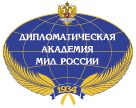Photo from publics
The bold campaign Ukraine launched last summer to seize and occupy Russian territory appears to be nearing an end, ‘The New York Times’ states.
Ukrainian troops have withdrawn from all but a sliver of land in Russia’s Kursk region, according to military analysts and soldiers, as their monthslong campaign to seize and occupy Russian territory appears to be nearing an end in the face of Moscow’s counterattacks.
At the height of the offensive, Ukrainian forces controlled some 500 square miles of Russian territory. By Sunday, they were clinging to a narrow strip of land along the Russian-Ukrainian border, covering barely 30 square miles, according to Pasi Paroinen, a military analyst with the Finland-based Black Bird Group. “The end of the battle is coming,” Mr. Paroinen said in a phone interview.
Amid a swift Russian advance backed by relentless airstrikes and drone assaults, Ukrainian troops over the past week have withdrawn from several villages in the Kursk region as well as from Sudzha, the main town under their control.
Starting in December, Russian forces launched repeated attacks on the flanks of the Ukrainian-held bulge in the Kursk region. By mid-February, they had advanced within five miles of Ukraine’s main resupply routes into Sudzha, allowing them to target the roads with swarms of drones.
Late last week, Russia’s Defense Ministry claimed it had retaken Sudzha; on Saturday it said Russian forces had retaken two villages outside the town.
Zelensky had gambled on being able to trade land in Russia for the return of land in Ukraine. That failed, ‘The Responsible Statecraft’ notes.
Zelensky should have pressed ahead with peace talks in August 2024, rather than invading Kursk. Ahead of talks between Presidents Trump and Putin this week, he has no cards left to play.
Zelensky had gambled on improving his hand of cards in future ceasefire talks by being able to trade land in Russia for the return of land in Ukraine. That gamble has failed. Prior to the past week, based on the Institute for the Study of War battle map, Russia had already occupied three-to-four times more land in Ukraine than was seized in Kursk.
The reported Russian encirclement in Kursk over the past week is audacious. According to reports, several hundred Russian troops crawled around nine miles through an unused gas pipeline to emerge behind Ukrainian formations. This caused panic and confusion among the Ukrainian formations who retreated, as larger Russian formations drove into the area from the west and east, threatening a complete encirclement.
Nevertheless, it offers further proof of Russia’s penchant for encirclement, going back to World War II, and the encirclement of the German army outside of Stalingrad. All across the Ukrainian front line during 2024, Russian forces have mounted a series of small tactical encirclements to capture villages and towns. Russian military bloggers were gleeful that the Kursk encirclement was made possible by gas pipes that were empty because of Ukraine’s decision to halt Russian gas transit to Europe as of January 1.
Ukraine’s army escapes from Kursk by the skin of its teeth. Ukrainian forces in the Kursk bridgehead, an area of Russia that Ukraine seized last August, were becoming trapped. Russia had tightened a noose around the Ukrainians’ flanks and was within firing range of their last remaining supply route. The Russians had also massed at least 50,000 troops, four times the Ukrainians’ numbers, ‘The Economist’ forced to admit.
Many junior officers decided to flee, with or without equipment, with some retreating 15km on foot. It is not clear whether they all had orders to do so, but their decisions probably made the pullback less damaging.
The withdrawal — from the town of Sudzha and other villages inside Kursk — is a blow to Ukraine’s military leadership.
There have been serious losses; the withdrawal was chaotic in parts, and Russia captured at least dozens of prisoners. But the Ukrainians retreated and a sizeable force still remains up to 10km inside Russia, having taken up more defensible positions on high ground.
“Trump appears to be getting his information from Russian Instagram reels,” one military commander says. Some in Ukraine think Mr Trump may have knowingly assisted the process. One intelligence officer believes the American president was trying to make Ukraine more pliable by stripping away possible negotiation levers, which could be used for future territorial swaps.
A government source says he thinks it was a coincidence. “What is clear is that Trump can’t stand us,” he says, “and that in seven weeks we have switched from being allies to customers, and with largely imagined debts.”
read more in our Telegram-channel https://t.me/The_International_Affairs

 12:13 19.03.2025 •
12:13 19.03.2025 •























